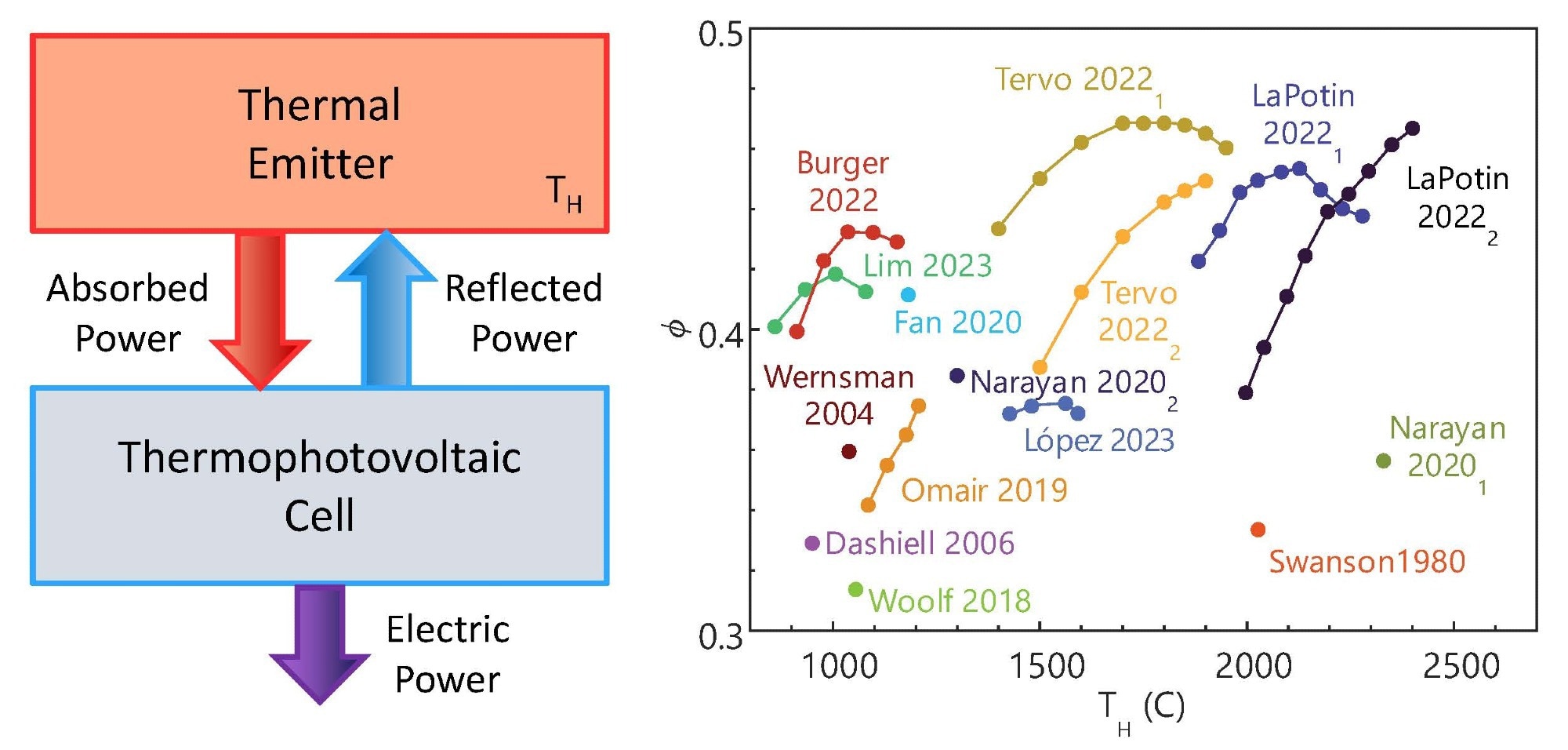Over the past few decades, the field of solar cells has experienced exponential development. The efficiency of solar cells is measured under standardized conditions, making it easy to compare all devices.

Thermophotovoltaic cells convert the heat radiated by a thermal emitter at temperature directly into electricity (left). A newly developed thermodynamic figure of merit helps to assess the performance of thermophotovoltaic devices and compare existing experimental measurements to this metric (right). Image Credit: Giteau, Picardi, and Papadakis
Moreover, thermal radiation from any hot source can be converted into electricity using photovoltaic cells. This can be done, for instance, to recover waste heat released during industrial processes. They are known as thermophotovoltaic (TPV) cells in that scenario.
In contrast to solar cells, TPV devices are evaluated based on two distinct metrics: efficiency and power density. A TPV cell’s power density indicates how much electricity it produces per unit area, whereas its efficiency is calculated as the product of its electric power output and its absorbed heat flux. Both of these metrics must be taken into consideration simultaneously when evaluating the performance of TPV devices.
The lack of standardized operating conditions, like source temperature, makes comparing TPV devices even more difficult. Consequently, comparisons of experimental results have typically been made along a single metric at a time, disregarding the particulars of their operation.
Maxime Giteau, Michela F. Picardi, and Georgia T. Papadakis from ICFO (Spain) have proposed a universal figure of merit (FOM) to evaluate the performance of TPV devices in the study published in the Journal of Photonics for Energy (JPE).
Thermodynamic considerations led to the introduction of the FOM, which mitigates temperature dependence and explains the basic trade-off between efficiency and power density in TPV devices. The work allows the classification of previously published experimental results and provides a comprehensive metric for assessing TPV performance.
Similar to assigning grades to various TPV devices based on how well they balance power density and efficiency, this classification provides a clear picture of a device’s overall performance, assisting researchers and engineers in identifying which devices are top-notch and which ones might need improvement.
As the TPV field continues to grow with significant performance advancements, this figure-of-merit can serve as a metric to track progress, especially as devices get closer to operating at their thermodynamic limits.
axime Giteau, ICFO
Journal Reference
Giteau, M., et.al (2024) Thermodynamic figure of merit for thermophotovoltaics. Journal of Photonics for Energy. doi.org/10.1117/1.JPE.14.042402